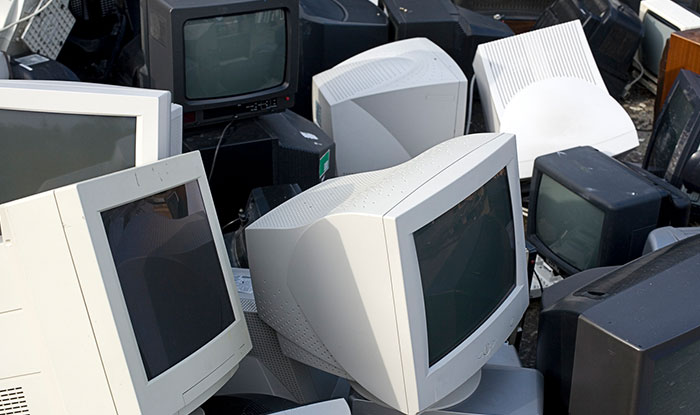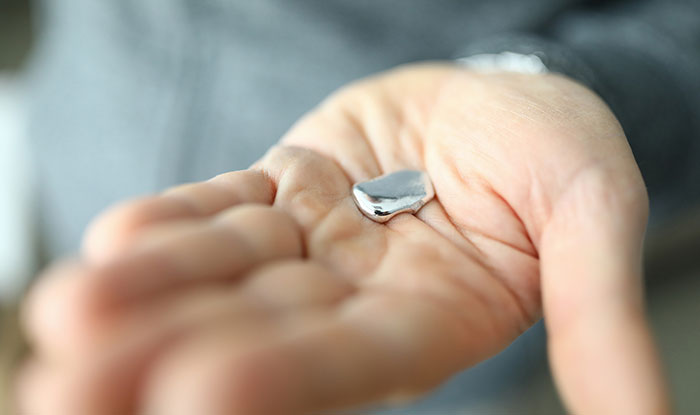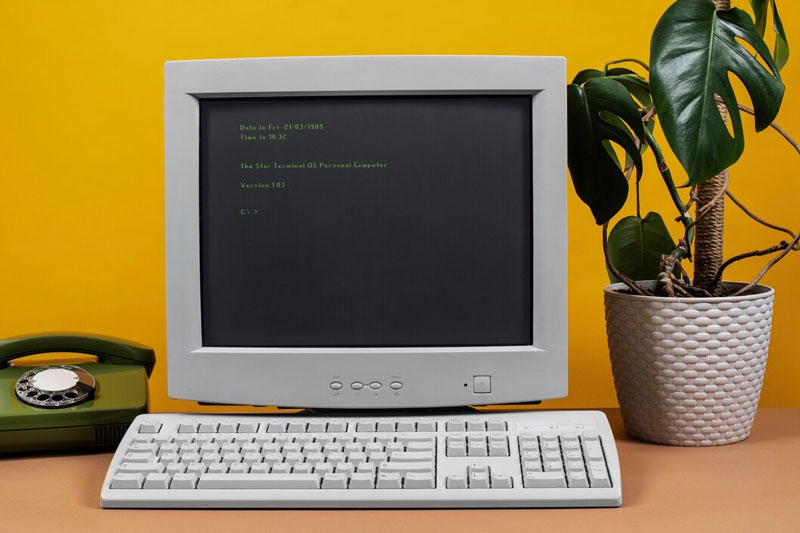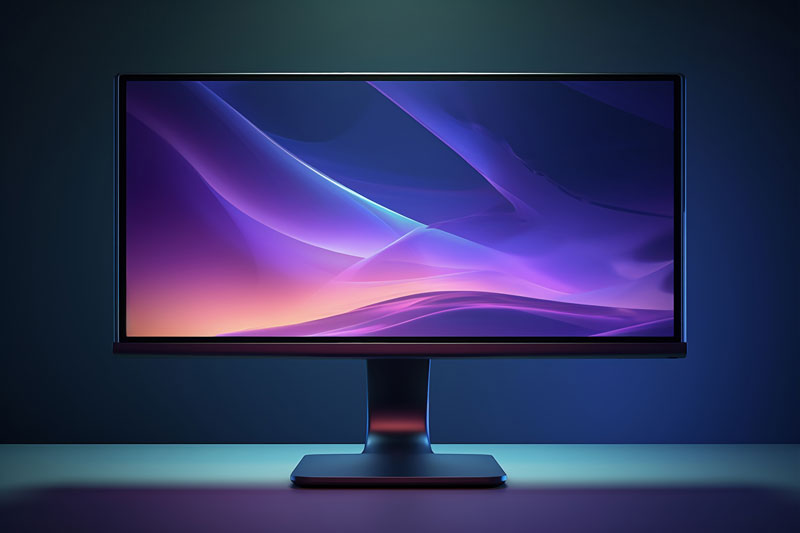How To Prepare Your Monitor Or LCD Screen For Recycling? – Steps To Follow!

Photo Credit: iStockPhoto/bunhill
Customers don’t necessarily think of computer monitor recycling as all that critical when thinking about e-waste. After all, how toxic a simple screen can be? In truth, our electronic devices, including computer monitors, are made using a diverse range of materials and some of them are extremely toxic. If you have an older cathode ray tube monitor, that thing is lugging around 4-8 pounds of lead. And LCDs? They contain mercury.
Together, these two substances make up some of the most toxic substances known to man. High exposure to lead and mercury can cause kidney failure, developmental disorders in children, and cognitive difficulties.

Image Source: iStock/Ivan-balvan
Even though the latest computer monitors don’t contain high amounts of lead and mercury, responsible monitor recycling is critical. Any exposure can be risky.
In this post, we share how to prepare your monitor for recycling, highlight the differences between different types of computer monitors, and how to recycle them properly.
Types of computer monitors
Computer monitors have evolved over the years. They used to contain high amounts of toxic chemicals including lead and mercury. But the most harmful of them, CRT monitors have gradually been phased out.
PC monitor recycling companies and experts classify these into three categories:
– CRT Monitors
Cathode Ray Tube monitors were similar to old-fashioned TVs. They used a large glass vacuum tube to filter light and create images. But that tube was bulky and that’s why those classic TVs and monitors were so large.

Image Source: freepik.com/freepik
They used to be the standard but took massive amounts of energy to run. CRT monitor recycling is also tougher because of the huge amounts of lead they contain. LCD monitors eventually replaced them as the standard technology in the early 2000s.
– LCD Monitors
Liquid crystal display monitors, or LCDs, are made of small reactive crystals. They are lighter and thinner than CRT monitors. Though they still contain lead and mercury, it’s in far lesser amounts than their predecessors used.

Image Source: freepik.com/freepik
A major reason that LCD monitors aren’t the norm anymore is that they use nitrogen trifluoride in their manufacturing. Nitrogen trifluoride is 17,000x worse than CO2 for the climate. LCD monitor recycling also requires special care and expertise throughout the process.
– LED Monitors
Light-emitting diode monitors are the latest in the bunch and the most environment-friendly on the list. They do not contain toxic chemicals and are easier to dispose of in a landfill.

Image Source: freepik.com/freepik
Invest in LEDs for a planet-friendly electronic purchase, invest in LEDs for a planet-friendly electronic purchase.
Toxic components in computer monitors
Computer monitors are considered hazardous waste. Take a look at some of the most harmful substances they contain.
– Plastics

Plastic is notorious for its poor recycling capabilities. It takes around 400 years to biodegrade, and recycling it is extremely expensive and complex. Modern computers rely on plastic to create their back covers and stands.
– Lead

Though the use of lead has been largely reduced in new monitor manufacturing, it’s still used to solder electronic components together. Lead can cause developmental delays in children, among other issues. Adults who are exposed to lead can suffer from kidney damage, reproductive issues, and nervous system failure.
– Cadmium

Some computer monitor screens may contain cadmium as an inside coating. It is a known carcinogen and can cause a wide variety of health issues.
– Mercury

The crystal displays in LCD monitors and screens contain mercury. You find them in desktop computers as well as laptops. Mercury is extremely harmful to the immune system, and can also damage the central nervous system as well as lung and kidney failure.
– Flame retardants
Flame retardants are used in computer manufacturing to decrease the flammability of its various components, including monitors. Flame retardants can be a potential carcinogen and exposure to them must be avoided.
Why is it important to recycle LCDs or monitors?
Responsible recycling of computer monitors is necessary considering the variety of toxic chemicals they contain. It becomes even more important if you factor in the following reasons:
– Preventing environmental hazards
Dumping computer monitors in landfills without recycling them properly is a grave environmental threat. It exposes the land, water, and air to toxic contamination and affects nearby communities. Exporting e-waste to developing countries makes environmental concerns more urgent. Countries ill-equipped (in terms of infrastructure and budgets) to handle incoming e-waste suffer various results. This includes community exploitation, erosion of natural resources, and worsening planet health.
Reducing e-waste
E-waste is a menace to the climate. Rising levels of global e-waste make it essential for electronic consumers to recycle all electronics ethically. This includes creating less waste, using electronic products more mindfully, investing in repairs to extend their lives, and recycling to extract as much value from discarded tech as possible.
This mindful way of consuming electronics is referred to as circular economy. Learn more about it here.
– Legal compliance
Several states in the U.S. have banned e-waste disposal in the trash. The Pennsylvania Covered Devices Recycling Act in Pennsylvania has made it illegal for consumers to throw their e-waste at the curb or put it in the trash. Citizens must dispose of their outdated tech in designated electronic recycling locations or check with a local e-waste recycler for options.
Failure to do so can expose residents and businesses to fines and legal proceedings.
Environmental hazards of improper monitor disposal
What can go wrong when computer monitors are not recycled properly?
- Soil contamination: When e-waste, including computer monitors, is dumped into landfills without proper procedure, it can contaminate the land and the groundwater. It affects nearby communities and creates havoc for humans, wildlife, and the planet.
- Water contamination: Water resources like rivers and seas can also be affected by toxic exposure to hazardous chemicals in computer monitors. It can endanger marine life and can potentially get into the food chain.
- Air pollution: Improper e-waste includes burning that waste. When that happens, toxic chemicals become part of the air we breathe. It can affect the respiratory system, cause cancer, and severely damage the nervous system.
- Health risks: Workers who work in illegal e-waste dumping sites are continuously exposed to harmful chemicals like lead and mercury. There’s a long list of health risks associated with such exposure. It causes cancer, affects the reproductive system, creates child development challenges, and much more.
- Virgin mining: Monitors are made using valuable raw materials. When we throw them away, it not only wastes those precious metals but also creates the need to mine more. More mining puts vulnerable communities living in the region at more risk and creates extreme challenges like child labor and child exploitation.
- Landfill expansion: Increased e-waste means we need more land for landfill purposes instead of agriculture and industrialization. On the one hand, it creates more environmental risks. On the other, it directly affects how much food we can produce or how much more industrial progress we can make.
4 Steps to Safe Computer Monitor Recycling
Preparing a computer monitor for recycling is a straightforward affair. Before packing it up, ensure you have gone through the steps below.
– Explore repair options
Are you recycling your monitor because it’s cracked or broken? Explore repair options first.
Check if the monitor is under warranty. If it is, your manufacturer may be able to fix or replace it. If it’s not under warranty, they may charge a repair fee if it’s repairable.
If it’s beyond repair but the crack is minor and doesn’t affect the display, a screen protector might help. If none of this fixes the issue, move on to the step below.
– Think about reselling or trade-ins
Consider reselling if you are getting rid of an old or broken monitor or upgrading your system. Monitors in working conditions often get a good resale value. Even a broken or damaged one can get you good money if you find a suitable cash-for-tech business.
There are tons of those online. A simple online search is a good place to start.
Alternatively, you can explore trade-in programs from your manufacturer. All major computer manufacturers offer these programs. Dell monitors recycling is a particularly popular program in the industry.
– Find a local monitor recycling company
If your computer monitor is damaged or outdated beyond repair or resale, it must be recycled properly. Broken monitors can leak hazardous chemicals which can endanger human and environmental health and well-being.
Find a local monitor recycling company to take care of it. Look for one with an impeccable reputation and transparent recycling processes. Remember that computer monitor recycling can be risky with the potential of toxic exposure. Choose a company that offers safe recycling environments complying with all federal and state codes.
– Unplug the monitor and pack it properly
There isn’t a lot of preparation to do with computer monitor recycling. Just unplug all the wires and cables. Clean the computer with a dry cloth and start packing it. Ensure there aren’t any loose components around. If the screen is cracked or broken, use bubble wrap to pack. Also, tell the recycling company so they come prepared.
Conclusion
Computer monitors may look like innocent screens but they are made using materials that can harm the environment. Bookmark this guide for all future references to computer monitor recycling. Remember it’s a necessary step to staying legally compliant and being a good friend to Earth.
About The Author Kelly Sampson
Kelly Sampson is a writer, blogger, and environmental enthusiast. She has strong opinions about climate change, the dogs vs. cats debate, and Oxford commas. She has lent Hummingbird International her engaging and spirited voice and turned our blog into a great place to find valuable information about e-waste, e-waste recycling, and the ITAD industry. Explore our blog to read more of her work.






